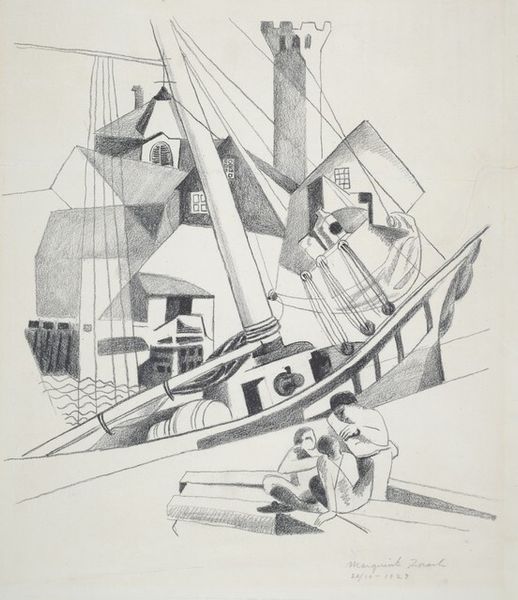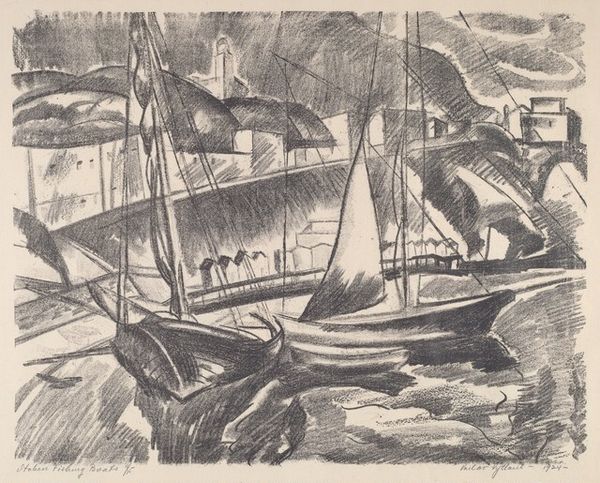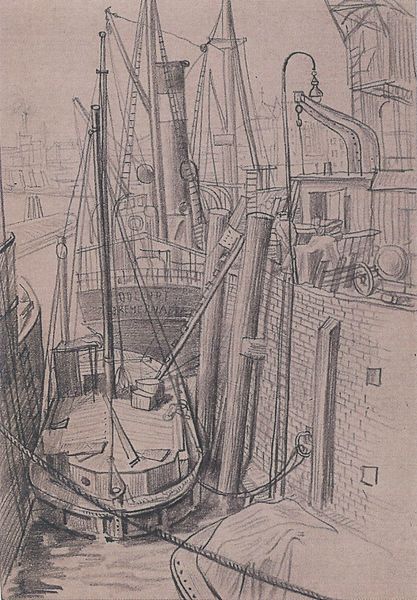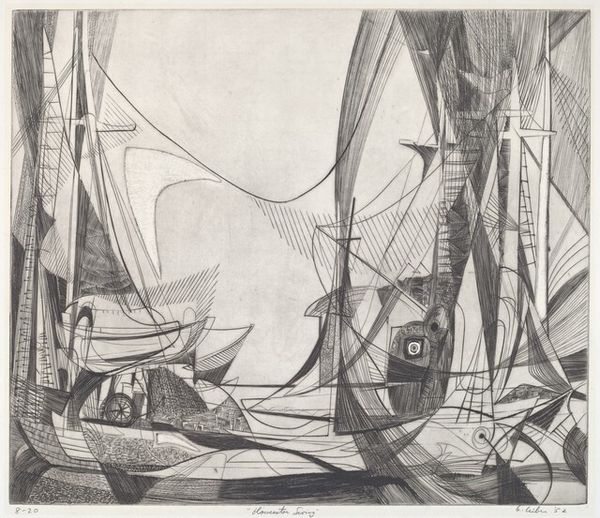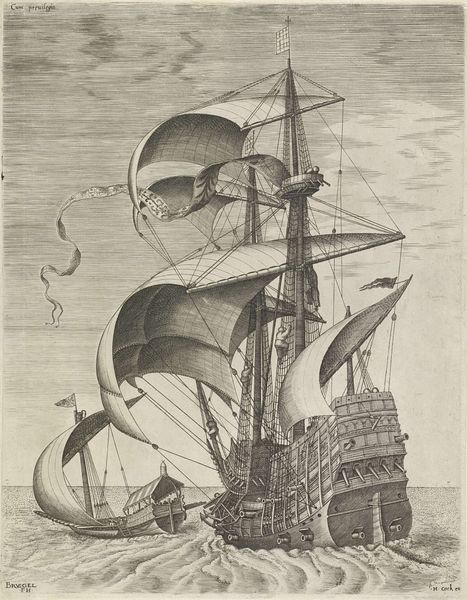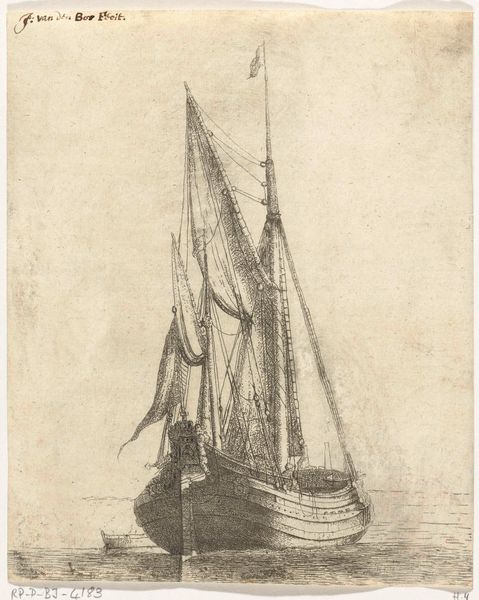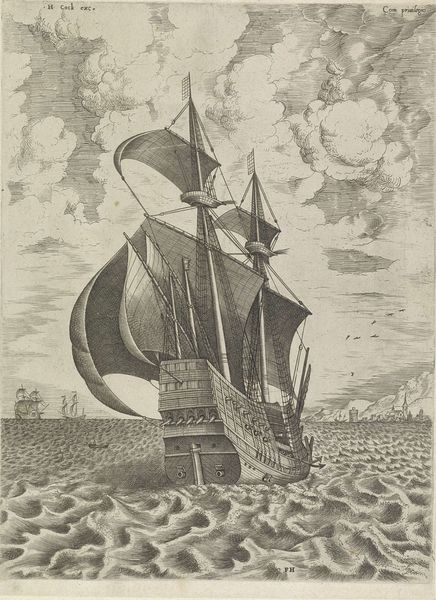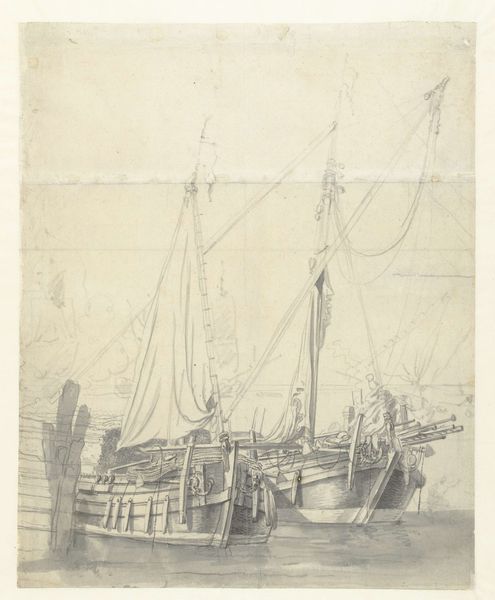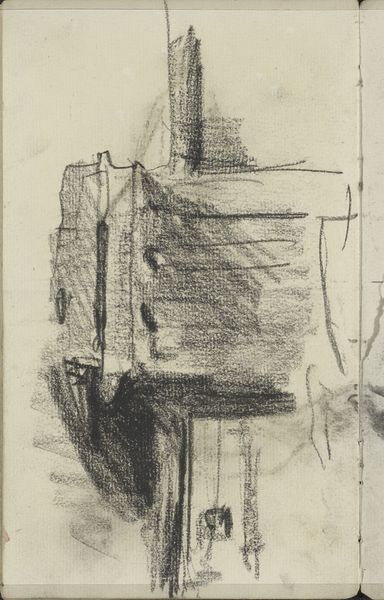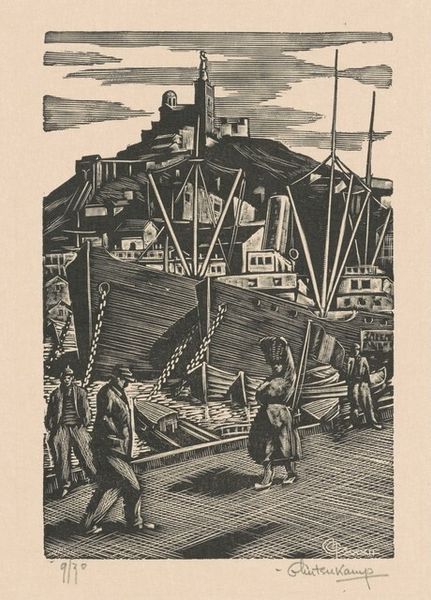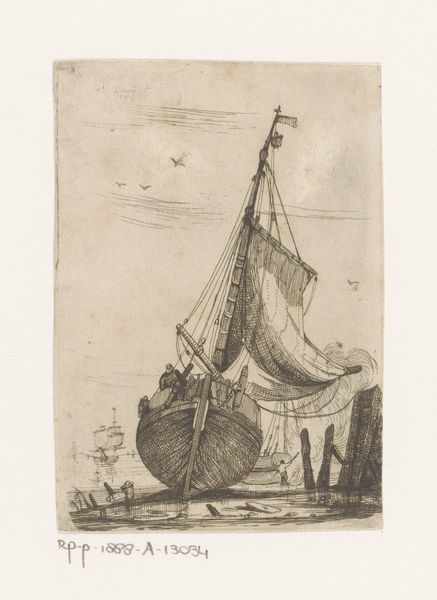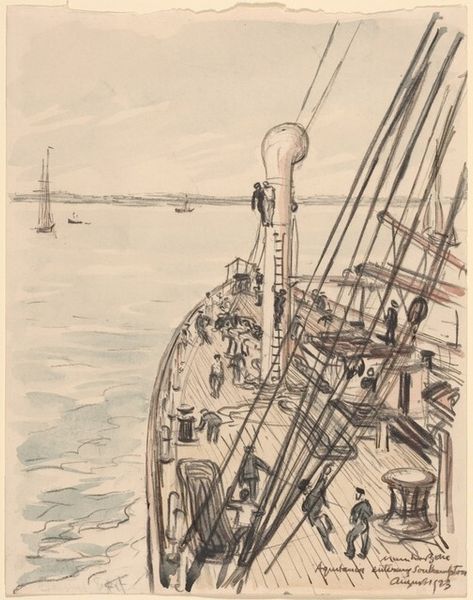
drawing, print, pencil, graphite
#
pencil drawn
#
drawing
# print
#
pencil sketch
#
form
#
pencil
#
line
#
graphite
#
sketchbook drawing
#
cityscape
#
realism
Dimensions: image: 336 x 260 mm sheet: 480 x 358 mm
Copyright: National Gallery of Art: CC0 1.0
Editor: This is Ryah Ludins’s print, "Masts," from around 1928-1930. It’s a graphite drawing, and it feels almost architectural to me in its starkness. There's a real emphasis on form. How do you interpret this work in the context of its time? Curator: The date is crucial. We're on the cusp of the Great Depression. Prints were an affordable art form, accessible to a wider public than painting. Look at how Ludins has framed these ships: not as symbols of romantic seafaring, but as industrial forms, almost urban landscapes themselves. The choice of graphite lends a certain weightiness, don't you think? Editor: I do see that industrial feel. The overlapping lines and shapes do create a dense, almost claustrophobic feeling, despite the subject matter being ships at sea. Curator: Exactly! Now consider the societal context. What did images of industry represent at that time? Were they celebratory? Or were they already carrying anxieties about labor, progress, and the human cost of development? These weren't leisure yachts; they were likely working vessels, contributing to the city's economy. And who would have been viewing and purchasing a print like this? Editor: That makes me think about the WPA Federal Art Project, aiming to support artists during the Depression through public art programs. Was Ludins possibly engaging with that ethos of art serving a public function? Curator: A keen observation. While Ludins wasn't directly part of the WPA at that moment, the drawing certainly anticipates that shift towards a socially conscious art. And in some ways, a work about labour, the daily life of cities… they could serve a dual purpose. So while visually about one subject, it is speaking of something greater. It would be up to interpretation by the people who come to see it and how they use its image as context. Editor: This conversation's been illuminating. I now see how the print’s seeming realism is layered with these socio-political and artistic intentions, making it much more complex and resonant than I initially thought. Curator: Precisely. And hopefully it encourages a deeper consideration of the art in its public and political contexts for the modern viewer too!
Comments
No comments
Be the first to comment and join the conversation on the ultimate creative platform.

